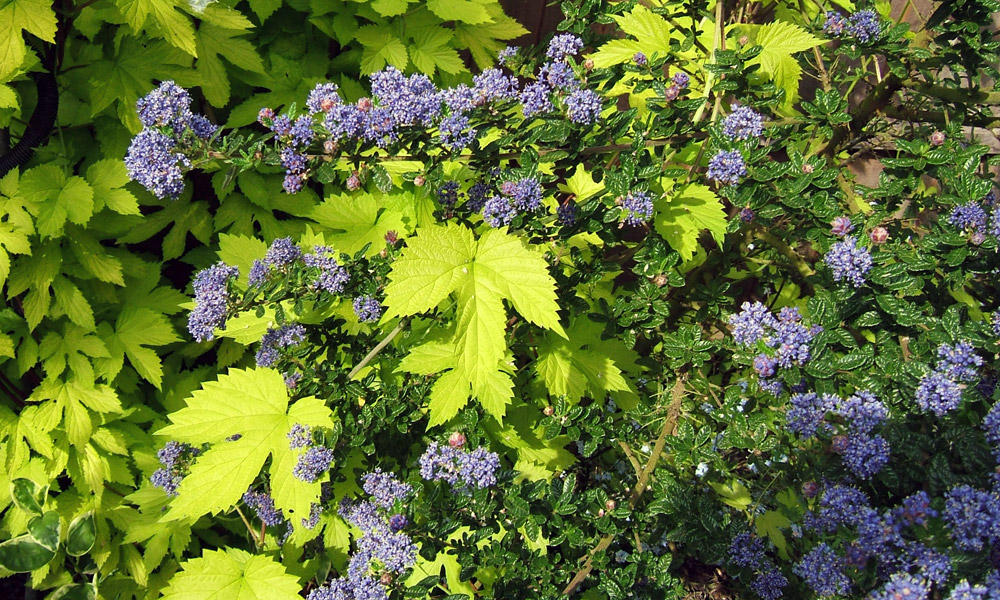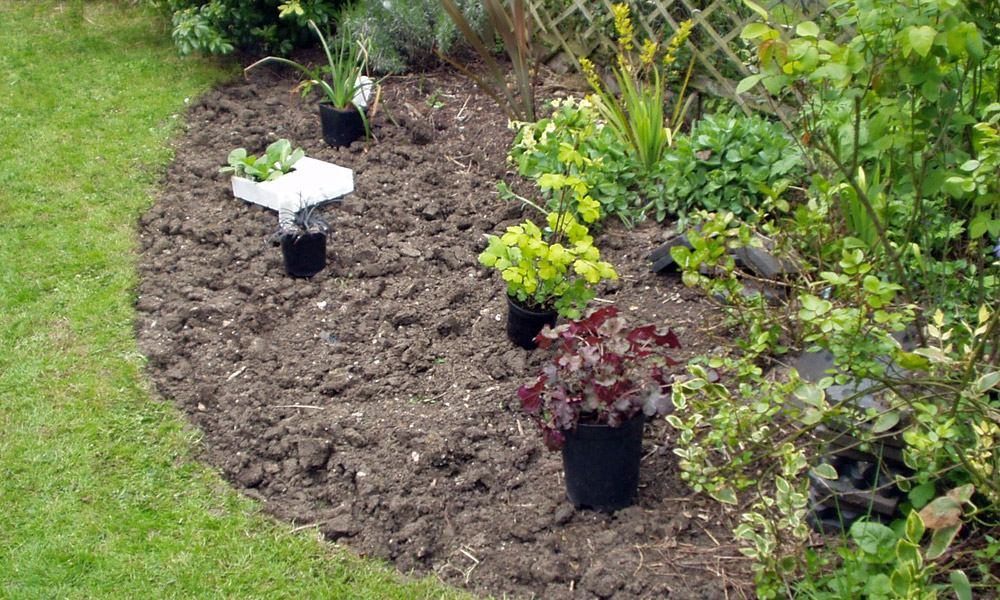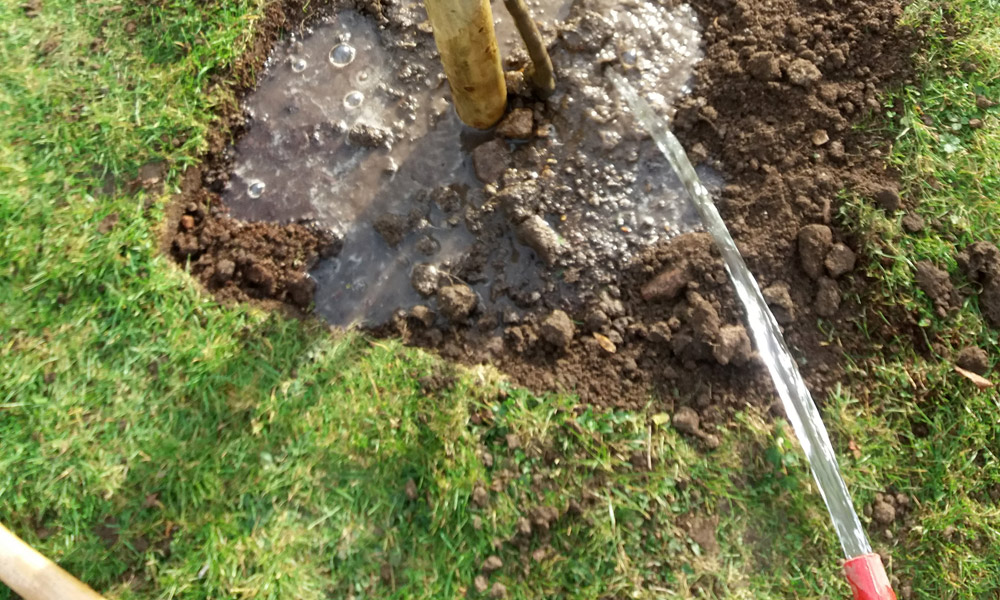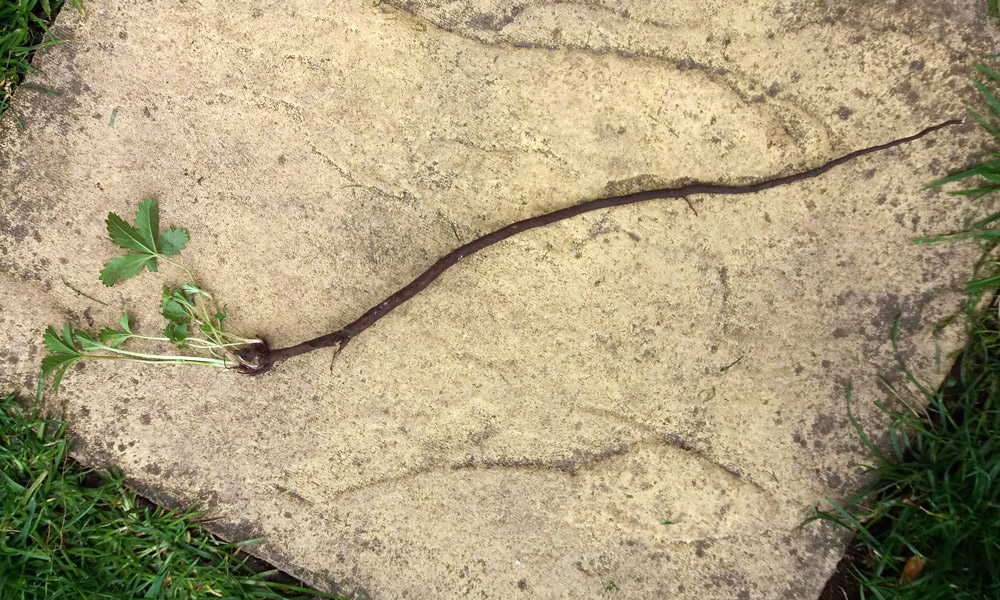Gardening for Beginners - How to Start
Some forward planning and preparation will result in much greater success
1 - Be realistic about what can grow where

Where you garden will largely be beyond your control, you have what you have and can probably do little or nothing about its situation in terms of climate, surrounding trees/hedges, sun or shade etc.
Be realistic to avoid disappointment and wasted time, effort and money, choose which plants will go where by matching their needs to what you can provide. Sunnier and damper spots will give you the greatest amount of choice over what will grow there. Damp shade still has many possibilities, dry shade presents the most difficult conditions and the lowest (very low) variety of plants.
The best way to initially find what will grow in your garden is to look at what grows well in other gardens nearby. There will probably be also many other plants that will also grow that you can find out about and try later on, I suggest starting with the easier ones so you have some almost guaranteed success. Try not to start by going to a garden centre and buying plants that catch your eye
Don't try to plant anything too near to a hedge, which are strongly growing trees or shrubs planted closely together, what is above ground will take the sunlight and what is below will take the water and nutrients so stay at least 2 feet away (60cm) to give your plants a chance.
Vegetables and fruit need as much direct sunshine as possible to do well, several hours a day at least, bear this in mind if you want to grow these and give them a prime spot.
2 - Clear the soil before planting

This is the hard work part, but preparation really is the best thing you can do to start your plants off.
The main thing is to get rid of any other plants in the area where you are planting, this will mostly be weeds and/or grass, but also be aware that planting a new small plant too close to bigger established plants won't work either, which do you want the most?
This doesn't mean just cutting or tearing off the foliage, but getting any weeds or other plants out by the roots. To do the job properly you should dig them up and tease any roots out from the soil. If you are very unlucky, you may have weeds that have roots like a loose bundle of buried spaghetti, get them all out or they will grow again and you'll be weeding forever. Put them in the recycling bin to be collected rather than on the compost heap as household compost rarely reaches the temperature required to kill them. If you do it properly and don't just neglect the area you won't have to do this again.
Dig over the place you are planting, this should at minimum be 12"/30cm around the plant you are putting in. If it's a larger area, the whole thing should be dug over and not just an area around the plants, get rid of all and any weeds. If the soil is very heavy and/or wet, a fork will make the job easier or wait a while for it to dry out or become rain softened if possible, clay soils have quite a narrow band of workability.
The process of weed removal will dig the area over. If there aren't many weeds and especially if it's winter, dig it over and look for dormant weed roots in the soil, they will probably be there.
If you have more time (at least 6 months, preferably 12), you could cover the ground with black landscaping plastic or old carpet to kill the weeds.
3 - Water, when needed, but not when not needed

I would say that wouldn't I? "How often do I water them?", I hate this question as the asker is expecting a definite answer at a rate they find convenient such as "A little splash once a week or when you remember", this is never the answer.
The actual answer is of course almost endlessly variable, the main factor being of course how much rain comes down.
The main reason to water garden plants is to get them established and look after themselves, so when they are first planted they get a good soaking, 0.5-1L for small plants and up to a full 10L can or bucket for large shrubs and trees. These are susceptible to drying out until they have made a good root system where they can look after themselves, a good initial soak also helps settle the roots.
Watering little and often is counter productive as it encourages plants to make shallow root systems and trains them to be dependent. What you need is to give them enough to drink but just once or twice a week and enough so that it soaks down and doesn't just wet the surface, this may require several tips of the can to allow the water to soak in rather than spread out.
Depending on the plant, how rainy it is and what the weather is like, it may establish with minimal extra help or it may require it for a few months over a long dry summer and autumn. Keep an eye on your recently planted arrivals in hot weather to see if they are wilting, permanent residents of the garden should be established by the second year, after the first summer of a bit of babying and the following winter.
If you plant summer bedding into the ground or in containers, it will need watering more often and as they are temporary only they may never really get independently established. Densely planted hanging baskets and similar will need watering at least everyday in the height of summer, they will never get enough rain from the sky when growing strongly due to the small size of the container. Again look daily for signs of wilting and give a good soak if this is visible.
4 - Weed, weed and thrice weed, but don't stop

Weeding is a never ending job as long as you do any gardening. There are steps you can take to keep it to a minimum, notably by clearing the planting area of weeds and weed roots before starting and by regularly inspecting and removing weeds as they arrive and never letting them build up in number, but it is something you will always need to do to some extent.
If left, weeds will compete with your plants initially for water, but eventually for light and space and then they will replace them.
5 - The rewards will come in 6-12 months and later

Aren't those daffodils / narcissi / tulips / lilies / geraniums / roses etc. etc. lovely! I'd like some in my garden.
To get a good display of many things in the garden, you needed to have made a start some months earlier. Spring flowering bulbs should be planted from late summer to autumn for instance, many summer flowers started off as seed in March or plants in May and shrubs such as roses planted the previous autumn start looking at their best in the 2nd or 3rd summer on.
If you plan to grow vegetables start thinking about what you will grow and buy the seed in January / February, there will be far more variety and they will be much cheaper than if you buy small plants in late spring or early summer.
To be a gardener you need patience, you can of course buy plants in flower from garden centres already in flower but when you plant them in the ground they will take a knock-back and find it harder to establish when they are flowering. If you must but plants in this way, go for those that have the greatest number of buds.
Longer lived plants such as trees, shrubs and large climbers will take longer to start to look their best, more like 5-10 years or more before they really look like a structural part of the garden.
The best gardens have mature planting, don't just plan for next season, make plans that will take years to come to fruition.
6 - The best fertiliser is the gardener's shadow

A popular gardeners proverb, the origin of which is lost in time.
This sums up much of what else is on this page. If you regularly go and look at your garden with a gardeners eye, i.e. as to what needs doing, it will thrive. A quick targeted drink for that plant that is wilting somewhat, pulling up those two or three weeds while they are small, staking those flowers that might blow over, rubbing off a few aphids with your fingers etc. etc. Small jobs done early and in time before a larger problem arises.
That's our cat Misty in the picture, he often shadows me in the garden to make sure I'm doing things right.
Copyright 2000 - present. All Rights Reserved | Privacy Policy Statement
